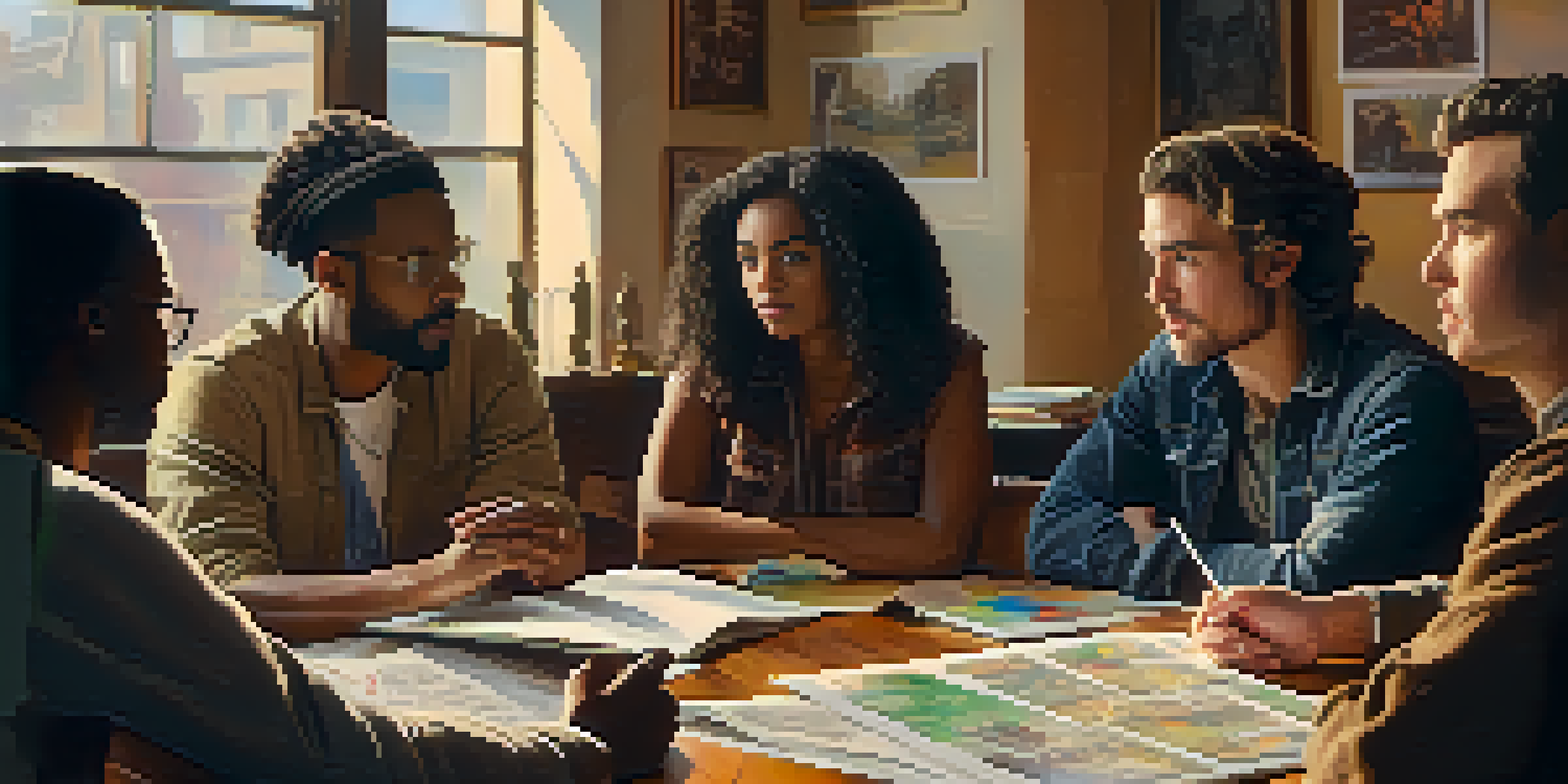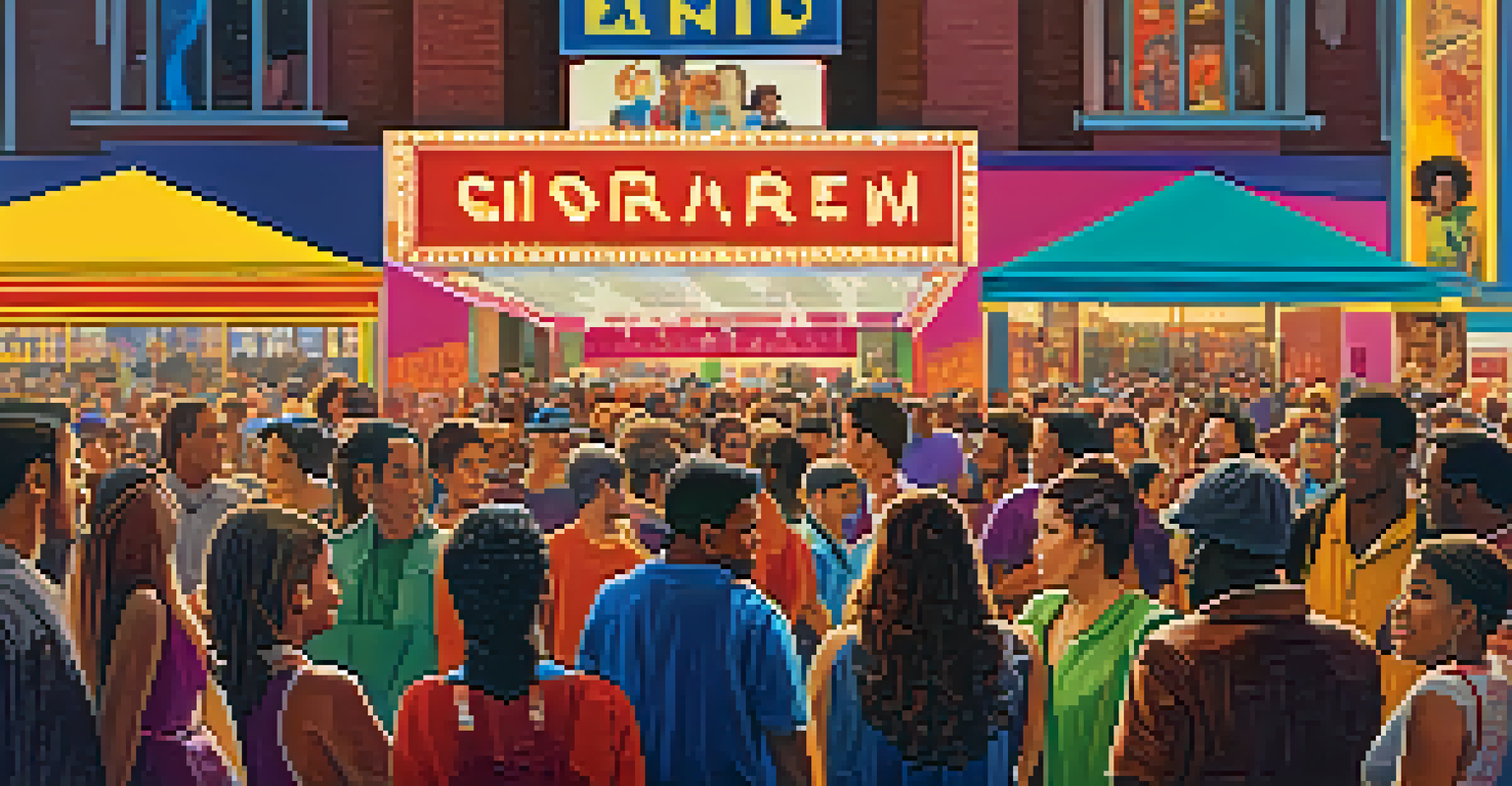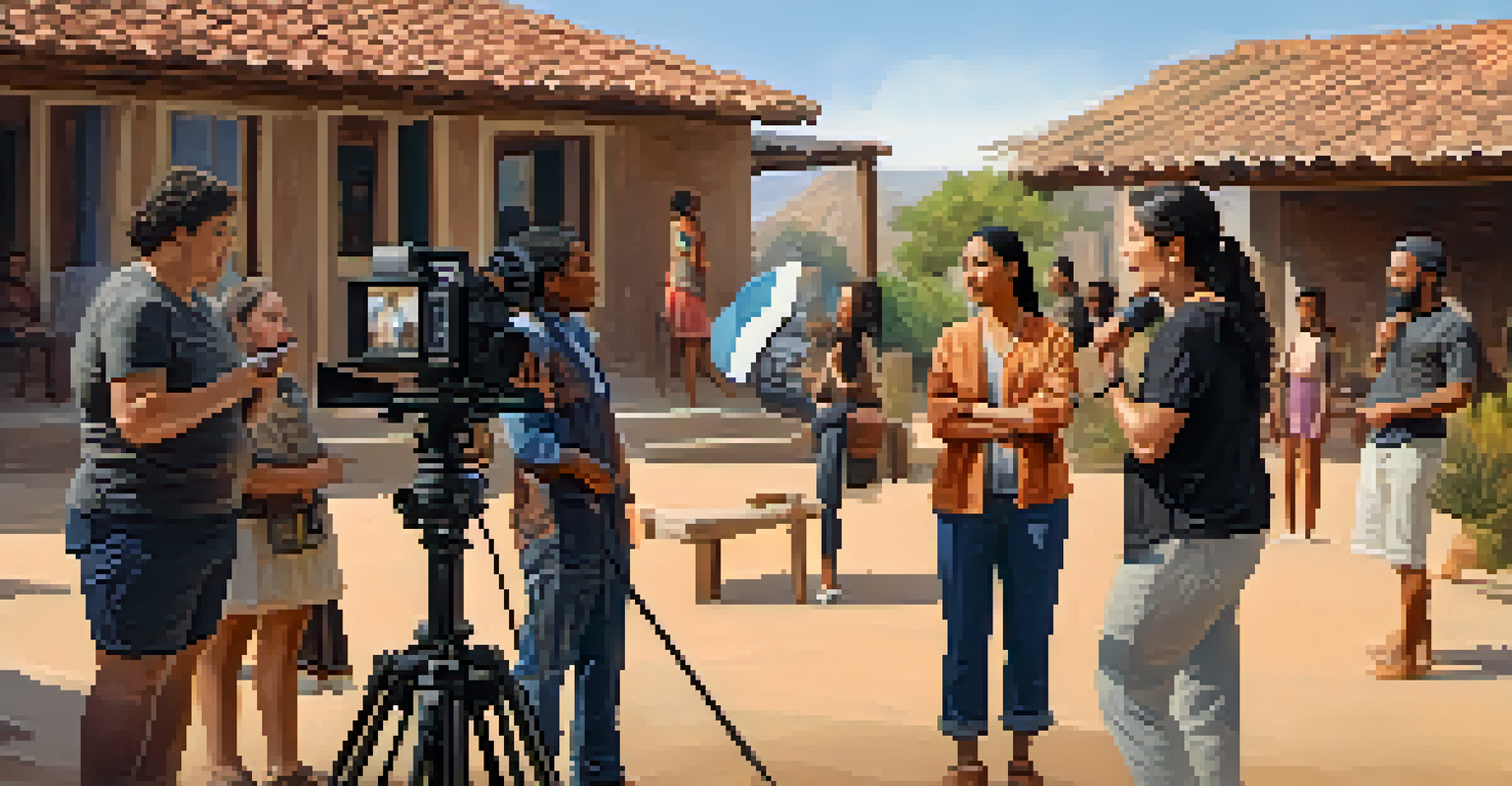Intersectionality in Hollywood: Gender and Race Representation

Understanding Intersectionality and Its Importance
Intersectionality is a framework that examines how various social identities, such as race and gender, overlap and affect individual experiences. In Hollywood, this concept is crucial as it sheds light on how different groups are represented and often underrepresented in media. By understanding intersectionality, we can better appreciate the complexities of identity and how they influence storytelling in film and television.
Diversity is being invited to the party; inclusion is being asked to dance.
For instance, a Black woman faces unique challenges that differ from those of her white female or Black male counterparts. This nuanced understanding helps us see why representation matters not just on a single axis but as a tapestry of interconnected identities. Recognizing these intersections can lead to richer storytelling and more authentic characters on screen.
Ultimately, embracing intersectionality in Hollywood can pave the way for more inclusive narratives that resonate with diverse audiences. As viewers become more aware of these dynamics, they begin to demand better representation, pushing the industry to evolve.
The Historical Context of Gender and Race in Film
To grasp the current landscape of representation in Hollywood, we must look back at its history. From the early days of cinema, stereotypes have shaped how women and people of color are portrayed, often relegating them to secondary roles or caricatures. This legacy has had lasting effects, perpetuating biases that still exist today.

For example, while women have often been depicted as love interests or damsels in distress, people of color have frequently been cast in roles that highlight their ethnicity rather than their individuality. This historical context is vital, as it informs current discussions about representation and the need for change in storytelling practices.
Intersectionality Enhances Storytelling
Embracing intersectionality in Hollywood leads to richer narratives that reflect the complexities of diverse identities.
By understanding this background, we can see the importance of advocating for more diverse voices behind the camera and in front of it. This shift is crucial for dismantling outdated narratives and ensuring that new stories reflect the rich tapestry of human experience.
Current Trends in Representation: Progress and Challenges
In recent years, Hollywood has made strides toward better gender and race representation, with more diverse filmmakers and actors gaining recognition. Movies and shows like 'Black Panther' and 'Crazy Rich Asians' have showcased the power of inclusive storytelling, resonating with audiences worldwide. However, while these successes are encouraging, they also highlight the gaps that still exist.
The power of a story is that it can change the narrative and shift the culture.
Despite some progress, many films and series continue to fall into the trap of tokenism, where characters from marginalized backgrounds are included without depth or authenticity. This approach often leads to one-dimensional portrayals, which can further entrench stereotypes rather than dismantle them. It's essential for creators to move beyond mere representation to foster genuine narratives.
Moreover, the industry still struggles with behind-the-scenes diversity, with many decision-makers remaining predominantly white and male. This lack of representation at the top can stifle innovative storytelling that truly reflects the experiences of all marginalized groups. A concerted effort is needed to address these disparities.
Case Study: Female Directors and Diversity in Film
Examining the role of female directors in Hollywood reveals crucial insights into intersectionality. Women directors often bring unique perspectives that challenge traditional narratives, infusing their work with authenticity and depth. Films directed by women of color, such as Ava DuVernay's 'Selma,' highlight the importance of diverse voices in portraying complex stories.
However, female directors, especially those from marginalized backgrounds, still face significant barriers in the industry. Statistics show that they are underrepresented in both film and television, limiting the variety of stories told and perspectives shared. Addressing this imbalance is not just a matter of fairness but also a way to enrich the cinematic landscape.
Historical Bias Influences Today
The legacy of stereotypes in film history continues to shape current representation, highlighting the need for change.
As audiences increasingly seek out diverse content, the demand for female directors is growing. By supporting and promoting these creators, Hollywood can cultivate a more inclusive environment that benefits everyone—audiences and filmmakers alike.
The Role of Audiences in Driving Change
Audiences play a powerful role in shaping the entertainment landscape, and their preferences can drive significant changes in Hollywood. When viewers demand diverse and authentic representation, studios are more likely to take notice and respond. Social media platforms have become instrumental in amplifying voices that advocate for better representation and challenging industry norms.
For instance, campaigns like #OscarsSoWhite have spotlighted the lack of diversity in major award nominations, prompting conversations about inclusion. This public outcry has led to changes within the industry, such as initiatives aimed at increasing diversity among nominees and winners. As audiences continue to hold Hollywood accountable, the push for intersectionality will remain strong.
Moreover, viewers can actively support projects that prioritize diversity by watching, promoting, and discussing films and shows that reflect a wide range of experiences. This kind of engagement not only shows demand but also encourages creators to explore intersectional narratives that resonate with diverse audiences.
The Future of Intersectionality in Hollywood
Looking ahead, the future of intersectionality in Hollywood appears promising yet challenging. As conversations about representation continue to evolve, there is a growing understanding of the importance of including multiple identities in storytelling. This shift can lead to richer narratives that not only entertain but also educate audiences about diverse experiences.
However, to achieve this future, the industry must commit to long-term change rather than temporary fixes. This means prioritizing diverse hiring practices, investing in underrepresented talent, and fostering an environment where all voices are heard. Only then can Hollywood truly reflect the complexity of society.
Audiences Drive Demand for Diversity
Viewers play a crucial role in advocating for authentic representation, influencing studios to adapt and evolve.
As audiences become more discerning and vocal about what they want to see on screen, the pressure on Hollywood to adapt will only increase. The journey towards a more inclusive and intersectional industry is ongoing, but with collective effort, it is achievable.
Conclusion: The Call for Inclusive Storytelling
In conclusion, understanding intersectionality in Hollywood is vital for fostering a more inclusive entertainment industry. By recognizing the unique experiences of individuals at the crossroads of different identities, we can advocate for storytelling that genuinely reflects the diversity of our world. This requires both audiences and creators to engage in meaningful dialogue about representation.
As we continue to push for change, it’s essential to remember that every voice matters. Supporting diverse stories not only enriches our cultural landscape but also promotes empathy and understanding among audiences. The more we champion inclusive narratives, the greater the impact on future generations of filmmakers and storytellers.

Ultimately, the journey toward intersectionality in Hollywood is a shared responsibility. It calls for everyone—viewers, creators, and industry leaders—to work together to ensure that all stories are told, and every identity is celebrated.